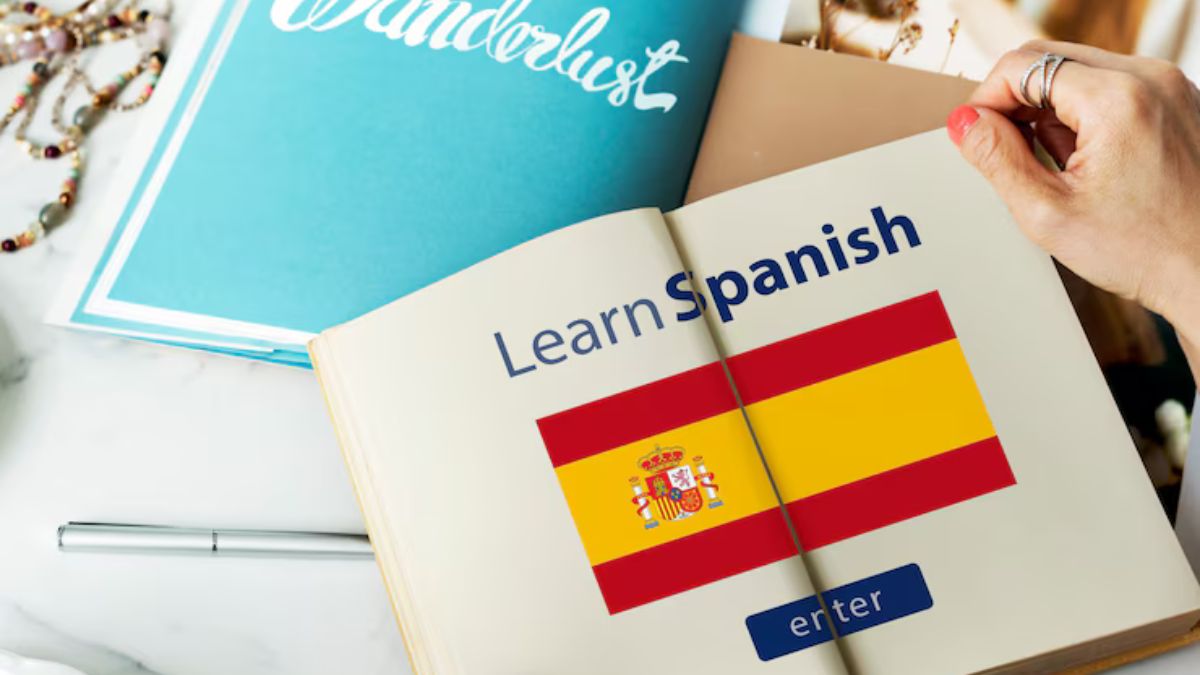Colors are more than just visual experiences; they’re a language of their own. When learning Spanish, understanding colors can elevate your conversations and help you connect with the culture in vibrant ways. Have you ever wondered how to say “purple” in Spanish? This lively hue is not only eye-catching but also holds significance in various contexts. Join us as we dive into the colorful world of Spanish vocabulary and explore everything from basic color terms to fun cultural facts about purple! Whether you’re a beginner or looking to refresh your skills, this lesson will brighten up your language journey.
The Importance of Learning Colors in a New Language
Colors are essential in any language, as they add depth to communication. When you learn a new language like Spanish, mastering colors enhances your vocabulary significantly.
Understanding colors helps with describing objects and emotions. For instance, saying something is “blue” or “green” can paint a vivid picture for the listener. This clarity fosters better conversations.
Colors also carry cultural significance. Different hues can evoke unique feelings or symbolize various ideas across cultures. By learning these nuances in Spanish, you enrich your understanding of Hispanic traditions and customs.
Moreover, using color vocabulary makes learning more engaging and enjoyable. It allows learners to express creativity while making connections between words and their meanings in real life.
Incorporating colors into everyday practice solidifies memory retention. The more colorful your vocabulary becomes, the easier it is to communicate effectively in Spanish!
Basic Color Vocabulary in Spanish
Colors are essential in any language. They help us describe our surroundings and express emotions. In Spanish, knowing basic color vocabulary opens doors to richer conversations.
Let’s start with the basics. The word for “red” is “rojo,” while “blue” translates to “azul.” For those who love nature, “green” is simply “verde.”
Don’t forget about yellow—it’s called “amarillo.” White is “blanco,” and black is referred to as “negro.”
When describing objects, you can use these colors flexibly. For example, a red apple becomes “una manzana roja,” blending nouns and adjectives smoothly.
Mastering these foundational words will make your Spanish journey more vibrant and enjoyable! With just a few colors under your belt, you’re already on your way to speaking like a local.
How to Say Purple in Spanish: Different Words and Expressions
In Spanish, the word for purple is “morado.” This term is widely used across various Spanish-speaking countries.
However, there’s also a more specific expression: “púrpura.” While it refers to the same color, it can sometimes evoke a richer or deeper shade of purple. Context matters when choosing which word to use.
Additionally, some regions might refer to lighter shades as “lavanda,” meaning lavender. This adds another layer of nuance when discussing colors in conversation.
When describing something that has a hint of purple with other colors mixed in, phrases like “violeta” (violet) can come into play too. Each option opens up new ways to express creativity and detail in your speech.
Exploring these variations not only enhances your vocabulary but also deepens your understanding of cultural perceptions surrounding colors.
Common Phrases Using the Word Purple in Spanish
In Spanish, the word for purple is “morado.” It’s not just a color; it often appears in various common phrases.
One popular expression is “estar de morado,” which means to be very cold or shivering. Imagine a person wrapped up in layers yet still feeling chilly!
Another phrase you might hear is “más allá del morado,” translating to “beyond the purple.” This one typically signifies something extraordinary or rare.
“Morado” can also show up in discussions about art and creativity. For instance, artists may describe their work as having a “toque morado” (purple touch) to convey uniqueness.
These expressions reflect how vibrant language can be when colors are involved, making conversations more colorful and engaging!
Fun Facts About the Color Purple in Hispanic Culture
Purple holds a special place in Hispanic culture, often symbolizing nobility and spirituality. In many Latin American countries, it’s associated with the Catholic faith, particularly during Holy Week.
In Mexico, purple is prominent in traditional festivals like Día de los Muertos. During this celebration, vibrant altars feature purple flowers as offerings to honor deceased loved ones. The color signifies mourning but also respects the cycle of life and death.
Interestingly, in some cultures across Spain and Latin America, purple can represent wealth due to its historical ties with royalty. This association comes from ancient times when dyeing fabrics purple was an expensive process.
Additionally, the color appears frequently in art and folklore. Renowned artists like Frida Kahlo utilized shades of purple to convey deep emotions in their work. It reflects passion and creativity that resonate within Hispanic heritage.
Tips for Practicing and Remembering Color Vocabulary
Practicing color vocabulary can be fun and interactive. Start by using flashcards with different colors, including purple, to reinforce your memory. On one side, write the Spanish name; on the other, draw or stick a colored image.
Incorporate colors into your daily life. Label items around your home with their corresponding Spanish names. For example, put “morado” on objects that are purple.
Engage in conversations where you describe things using color words. Try to narrate your day while emphasizing the hues of everything you encounter.
Use online resources like apps and games focused on learning colors in Spanish. They often make repetition enjoyable through challenges and quizzes.
Immerse yourself in music or films featuring vibrant visuals. This not only enhances vocabulary but also deepens cultural understanding of how colors are perceived within the language context.
Conclusion: Embrace the Vibrant World of Spanish Colors!
Learning how to say purple in Spanish opens a door to a vibrant world filled with rich expressions and cultural significance. Embracing color vocabulary not only enhances your language skills but also deepens your understanding of the culture behind the words.
Colors are essential in everyday conversations, from describing items around us to expressing emotions and preferences. As you incorporate new terms into your Spanish repertoire, you’ll find it easier to connect with native speakers and appreciate the beauty of their language.
So take time to practice saying “morado” or “púrpura,” explore common phrases that include these colors, and discover more about the influence of purple in Hispanic culture. Engaging with this colorful aspect of the language will make learning enjoyable and memorable.
Dive into this vivid realm today!







